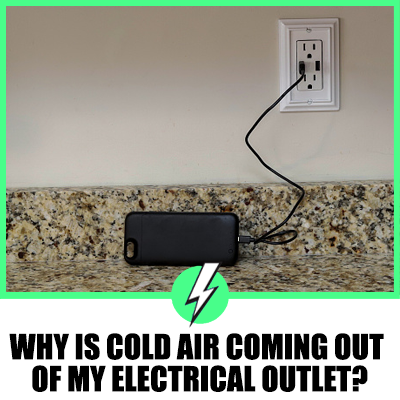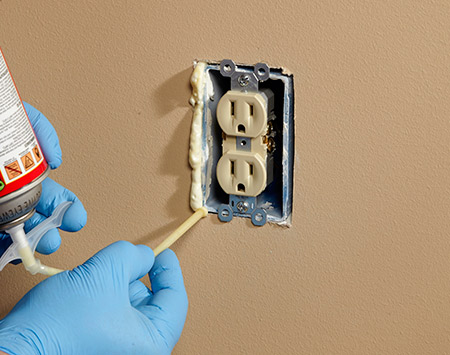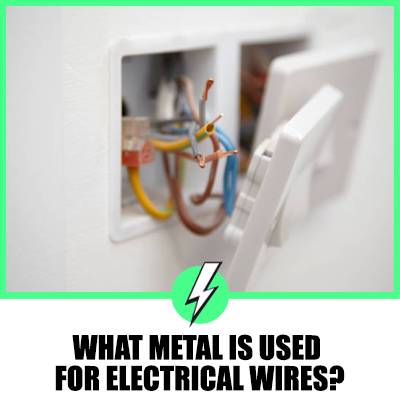Why Is Cold Air Coming Out Of My Electrical Outlet?
Have you noticed a chilly draft coming from your electrical sockets? Is there anything you can do about it?
Older homes were never appropriately insulated. Despite all of the grants for cavity wall insulations and loft space insulation, you can still be left with a powerpoint blowing cool air into your room. You can check the loft space and apply some fireproof calk around the cables to make a good seal.

Contents
Why is cold air coming out of my electrical outlet?
This is quite rare in the UK as insulation is a pretty good and high standard, but let’s just suppose you have that winter chill coming from your socket in your living room. Is it only one socket or more than one?
You need to investigate if it just started to happen or an ongoing problem. If it just started to happen, it could be caused by a few things.
Maybe you have had a roofing tile blow off the roof, letting in a constant stream of cool air.
You should take a look outside and see if there is anything obvious.
Next, you will need to venture into the loft and inspect for cold air areas. Heat rises regardless of how good your insulation is, so you may be able to identify a cold area.
Check your consumer unit.
Your sockets are supplied directly from the consumer unit/fuse box on a radial circuit. Your electrician has used conduit to protect your cablers or even a capping.
It could be possible a piece of mortar has fallen from the consumer unit allowing a steady flow of cool air to channel through the conduit and into your living room.
Under no circumstances should you try to start to investigate your consumer unit. If you suspect the problem is here, and you can feel a draught, ask your electrician to call by at a convenient time to try and resolve the issue.
Rodent nests
It’s an unfortunate part of life, but a rodent can enter into a loft space and cause chaos to your wiring from time to time. Rats, Mice, and squirrels will all gnaw away at cables.
If there is a nest, it will significantly disturb insulation, which could be sufficient to open a channel for airflow that will follow your wiring.
The way forward is your local council pest control service, which will quickly eradicate the problem.
It’s not just domestic houses that have this problem
Offices, shopping centres and commercial facilities all take making cables airtight seriously. With many cables letting a free flow of cool air into a building, it can dramatically affect the heating bills.
A small hole can be an entry point for rodents which can wreak havoc. Some companies have devised methods of making cables airtight and watertight in extreme conditions to address this.
Can you seal the socket with silicone?

Silicone is an insulator, so there is no problem there. First, flip off the breaker to the socket circuit you are working on if you can flip the main breaker in the consumer unit to make sure no electricity is flowing anywhere.
Disconnect the power socket and separate the wires, feel for the cold air inflow and use the sealant to dam the airflow.
With a move away from anything combustible in UK domestic electrics, you would better use a fire block sealant. It will do the same job but with added security.
Reconnect the power socket, switch on the main breaker, and you should be good to go.
Can I caulk around the electrical box?
Yes, the gap is small, so you need to apply the caulk sparingly. Use an acrylic latex caulk for the best results. It will expand and contract with temperature.
If the gap is bigger, you can use a foam sealant but still use a fire retardant calk for added protection.
Is there a type of caulk that is available for fire stopping?
Yes, fire retardant sealing is commonly used around electrical cables to prevent smoke and flames from spreading.
Most of the fire retardant seals are what’s termed intumescent. As the temperature increases, the sealant expands and hardens, becoming fireproof.
Can you blank the socket off?
If it’s one socket, you could always blank it off, but if you think this way, then cut the circuit to the socket and investigate the airflow.
If the worst thing happens, you can terminate all of the wires into a terminal block or wago and leave them secure in the pattress box at the back of the switch.
You could also use some insulation to make a thicker gasket around the edges of the socket before fitting the blanking plate.
Do ants come out of your sockets?
Not in the UK, although back in 2014, there was a report in the Evening Standard London that Asian super ants were chewing their way through electrical cables in Hendon.
This was very concerning given that almost half of house fires in the UK are related to electrical problems.
Do insects cause problems with electricity in homes in the UK?
Not really. The UK is not an insect or vermin free by any stretch of the imagination, but insects don’t seem to be a significant issue in the electrical supply.
However, there is damage caused by rodents such as rats and mice, who just love to nibble on electrical cables.
Finding the source of the airflow
As you can guess, this could be a task that will take some time and effort on the homeowner’s part.
If it is a big problem, you can call an electrician who will be better equipped to trace the cables to the point of origin and hopefully, they can make an effective seal ending the problem once and for all.





